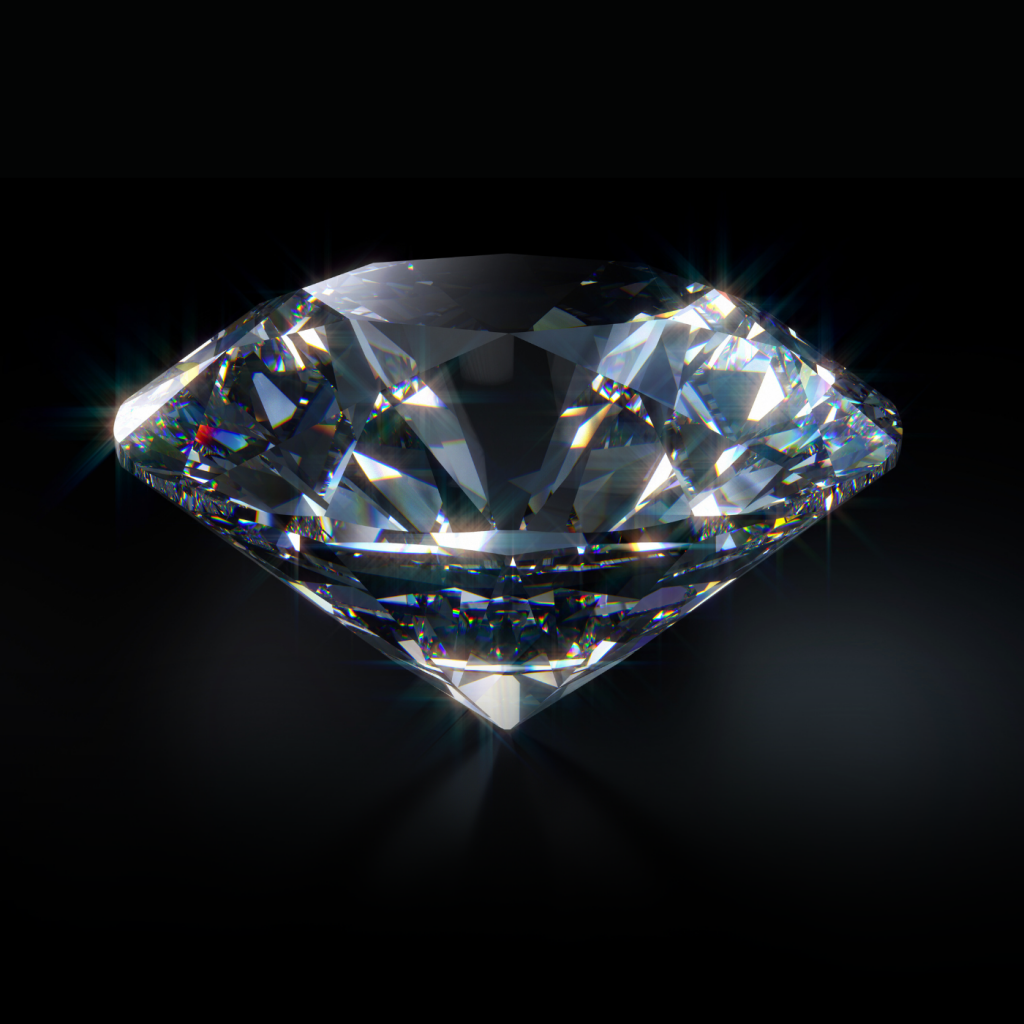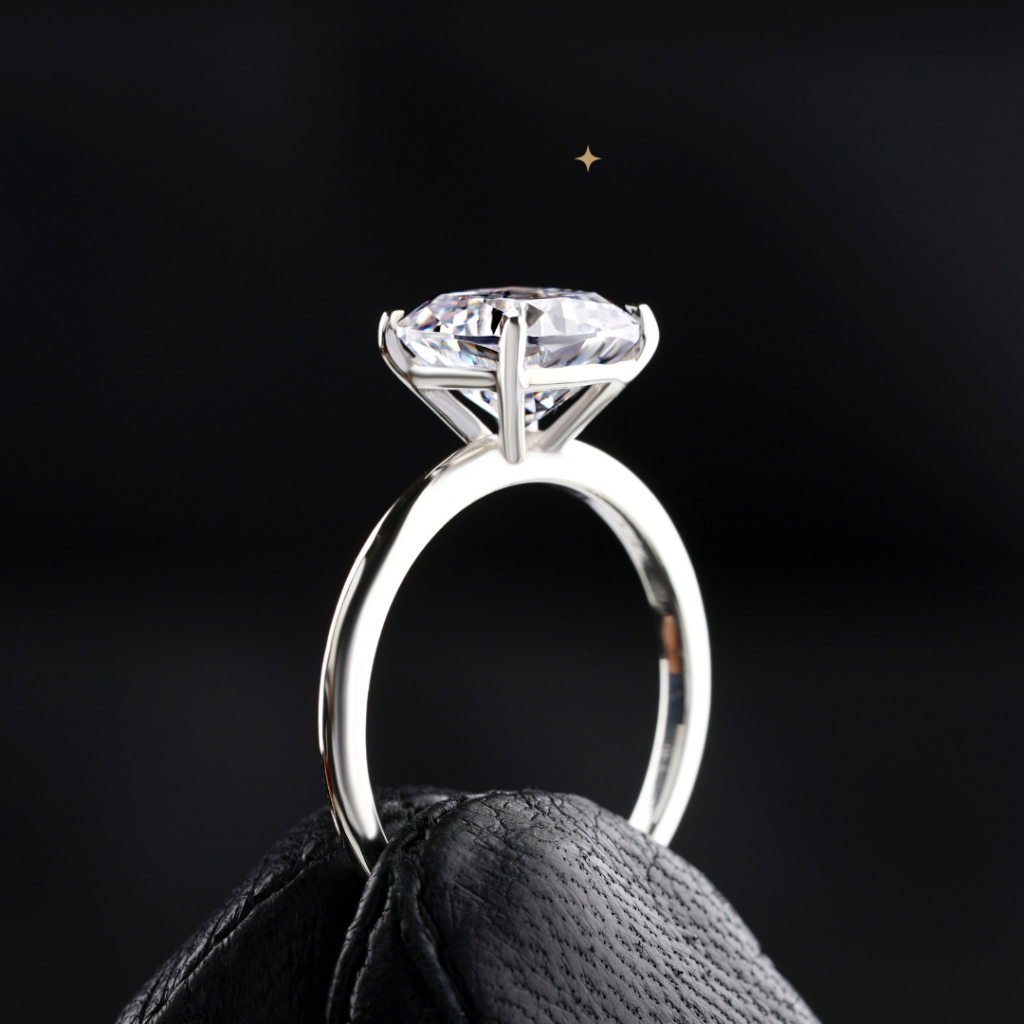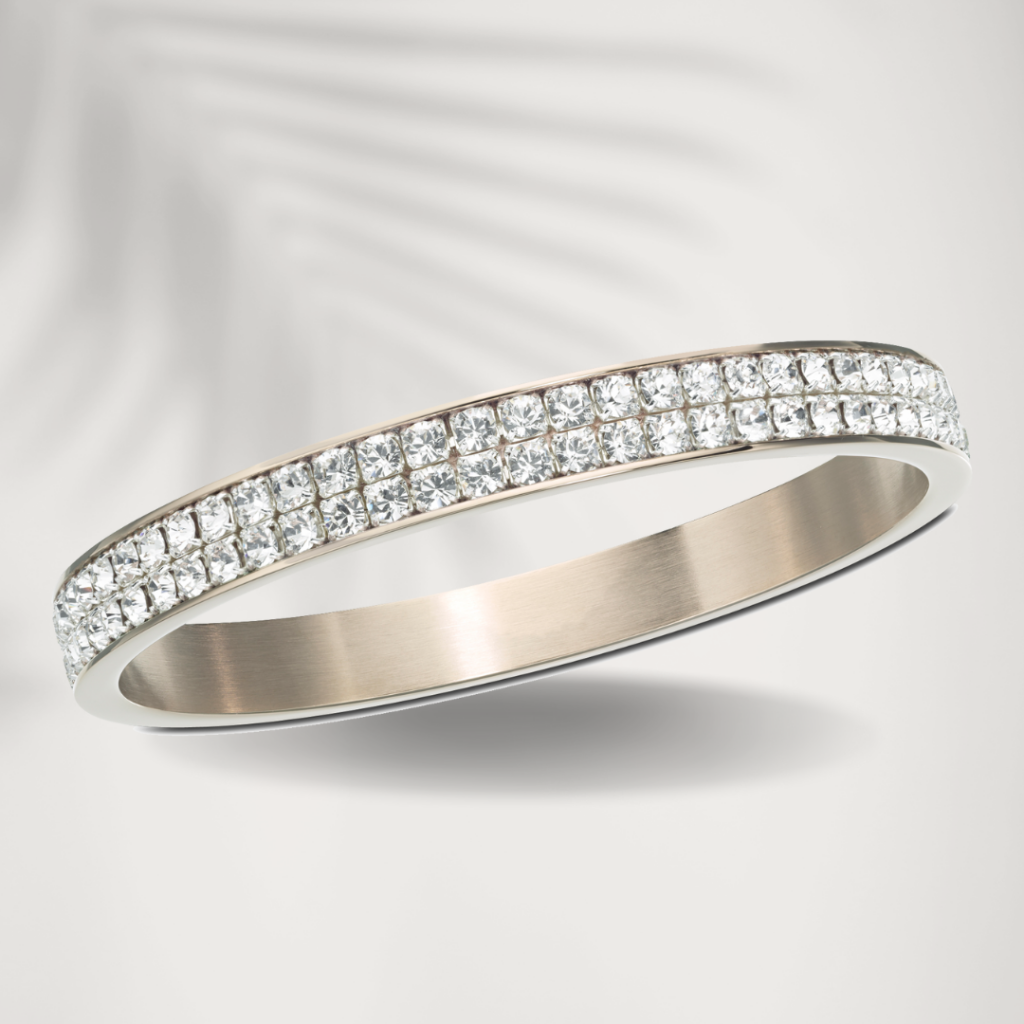Have you heard the hit song by Rihanna, “Shine Bright Like A Diamond”? Well, indeed, the shine of a diamond is such that it gravitates everyone towards it. But that’s not all they are popular for worldwide. Diamonds have ruled the world for ages. Each and every property of it contributes to a reason why it’s so much needed in the markets. All these demands, however, have been fulfilled by natural diamonds for long time. But the scenario has changed over the years. There are plenty of uses for diamonds, you’ll be amazed to know these highly demanded natural diamonds have strong competition from an alternative called “lab-grown diamonds”. Yes, diamonds are no longer the only ones that were mined from below the earth’s surface. There are alternatives too that have been gaining popularity in the diamond markets for a long time.
If you are clueless as to what these alternatives to natural diamonds are all about, you better learn them right here. Have a detailed look at the lab-grown diamonds that’s been becoming the new choice of diamond lovers.
Table of contents
- What actually is a Lab-grown Diamond?
- History of Lab-Grown Diamonds
- Types of Lab-grown diamonds
- How are the Lab-grown diamonds made?
- Characteristics of the Lab-grown diamonds
- Applications of Lab-grown diamonds
- Are Lab-grown diamonds fake or real?
- Certification and Grading of the Man-Made Diamonds
- How are Lab-grown diamonds identified?
- Increasing Popularity of Lab-Grown Diamonds
- Things to look for while buying Lab-grown diamonds
- Lab-grown diamond, Synthetic diamond, or Man-made diamond cost
What actually is a Lab-grown Diamond?
Natural diamonds were once the only diamonds we all knew. Things started to change when lab-grown diamonds entered the scene and started giving tough competition to the natural diamonds. The resemblance and properties of the two types of diamonds stunned many, and it is still impossible for one to find which one is a lab-grown diamond among the natural diamonds if you see them with your naked eye.

If you see natural diamonds and lab-grown diamonds closely, you may not see any difference between them at all. But does that mean they are the same? No, they’re not! There’s a level of their formation where they stand out from the natural diamonds, and they are giving tough competition to the natural or mined diamonds.
If we talk about the “lab-grown diamonds,” then they are indeed the diamonds grown in the labs, hence the name. It takes just a few weeks for lab-grown diamonds to be created, while we know how many years it has taken for natural diamonds to be created, which is millions of years.
In fact, lab-grown diamonds have a specific term to be called with, and they are “laboratory-created” or “the [manufacturer name]-created diamond,” “man-made diamonds,” “cultivated diamonds,” and many more, of course. But let’s have a quick look at its history.
History of Lab-Grown Diamonds
Certain unconfirmed reports may say lab-grown diamonds were there from 1879 to 1928. But General Electric is said to have actually introduced lab-grown diamonds around 1954. It was around the 1980s when man-made or lab-grown diamonds started to find their place in the markets.
Ever since then, there has been a surge in the popularity of lab-grown diamonds. In fact, it came up with varieties of lab-grown diamonds to choose from as well, and yes, they were almost the same as the natural diamonds. Here are the types of lab-grown diamonds that arrived in the markets.
Types of Lab-grown diamonds
If we throw lights on the two major categories or types of lab-grown diamonds, then we mainly have them as simulant diamonds and the other type as cultured diamonds. Both of these two types of diamonds have further different varieties under each of them.
Simulant diamonds are man-made diamonds that can be termed the closest to natural diamonds. However, what makes them different from the natural ones is their physical and chemical structure. Back in the 1970s, simulant diamonds were an alternative to natural diamonds.
The three varieties of simulant diamonds are Diamond Nexus stimulants, Cubic Zirconia stimulants, and Moissanite Lab-created gemstones.
Diamond Nexus Stimulants are the types of diamonds that have carbon and other ingredients mixed in their formation, while Cubic Zirconia Stimulants are the types of diamonds that have zirconium dioxide used in their formation.
Cultured diamonds, on the other hand, are created in an environment similar to that of natural diamonds. The only difference is that the former is given the desired environment in the lab. The number given to them, though, makes them different from the natural diamonds.
On the other hand, the Moissanite Lab-created diamonds have silicon carbide used in their formation.
The two types of cultured diamonds are HPHT diamonds and CVD diamonds. HPHT (high pressure, high temperature) diamonds are again the diamonds that have the environment needed for their formation, like natural diamonds. Meanwhile, CVD diamonds are those types where a hydrocarbon-gas mixture is used in the chemical vapor deposition method to form the diamonds.
Let’s know how these lab-grown diamonds are made.
How are the Lab-grown diamonds made?
Where natural diamonds have a high pressure and temperature needed to form beneath the earth, the same environment is needed even for lab-grown diamonds to form. The difference could be that such an environment is provided for the man-made diamonds in the labs.

There are, namely, two processes via which the lab-grown diamonds are formed: HPHT (high pressure, high temperature) and CVD (chemical vapor deposition). Both of these processes are effective in the creation of high-quality man-made diamonds.
Characteristics of the Lab-grown diamonds
Needless to say, it’s the characteristics of any type of diamond that make it likeable or desirable. Lab-grown diamonds, too, have certain characteristics that have impressed diamond lovers. Now let’s have a look at what characteristics these lab-grown diamonds have.
- Lab-grown diamonds are physically, optically, and chemically exactly the same as natural diamonds.
- Lab-grown diamonds are environmentally friendly and durable as well.
- Lab-grown diamonds are budget-friendly too and, as such, can be considered an affordable option.
- Lab-grown diamonds hardly lack supply in the markets because of their easier formation process than natural diamonds.
- One of the characteristics of lab-grown diamonds is that they are available in different colors.
- One cannot differentiate between natural diamonds and lab-grown diamonds.
- Lab-grown diamonds are graded too, like natural diamonds.
- No mining is required to create the lab-grown diamonds.
- Lab-grown diamonds take less time to be created than natural diamonds.
- Lab-grown diamonds are becoming popular in the diamond markets, giving tough competition to natural diamonds.
Applications of Lab-grown diamonds
Just like natural diamonds, lab-grown diamonds have several uses or applications. One of their uses is for machine tools and cutting tools. The hardness of man-made diamonds is one of their properties, which makes them best for making tools.
Man-made diamonds are also a good option as thermal conductors in certain electronics. Their properties of being thermal conductors and negligible electrical conductors are what make them suitable to be used in several devices, like high-power laser diodes. They can prevent overheating.
Man-made diamonds or lab-grown diamonds are also used as optical materials. They have started to replace the zinc selenide in Co2 lasers and gyrotrons. You can’t miss it; it’s the most important or popular application, and that’s as a gemstone.
Being a more budget-friendly gemstone than natural diamonds, man-made diamonds have become a popular alternative to mined diamonds. Jewelry, watches, phones, handbags, mobile phones, and even clothing have been opting for man-made diamonds for an enhanced look.
Are Lab-grown diamonds fake or real?
What could be the biggest doubt about lab-grown diamonds? Well, yes, it’s about its authenticity at first. Everyone wants to know and be assured if lab-grown diamonds are real or fake and whether their money in buying the same is worth it or not.
There’s a myth that lab-grown diamonds aren’t real diamonds. Of course, they don’t get mined from below the earth’s surface. But lab-grown diamonds are actually real diamonds. In fact, just like natural diamonds, even man-made diamonds are graded by the same institution for their quality that grades natural diamonds.
Even if you look at the condition and process in which man-made diamonds are formed, it’s very much the same as that of natural diamonds. Hence, even lab-grown diamonds are considered real diamonds.
Certification and Grading of the Man-Made Diamonds
Though man-made diamonds are growing popular, no one would think of mistaking the same for natural diamonds, isn’t it? Well, they must not be, and that’s why they are separately certified and graded as well. The authentication of lab-grown diamonds and their identity as man-made diamonds needs certification and grading just like natural diamonds. Now, the question is: who does all this to the lab-grown diamonds? Well, it’s the duty of the high-tech labs to test or grade the man-made diamonds.
Some of the institutes entrusted with these duties worldwide are the Gemological Institute of America (GIA), the International Gemological Institute (IGI), Gemological Science International (GSI), and the American Gem Society (AGS).
These institutes do the identification of both types of diamonds, i.e., natural diamonds and man-made diamonds. Special equipment is being used for the same. The process of their testing is so deep that, right from leaving the labs, the diamonds are tested at every stage until they reach their final buyers.
The certification and grading of the lab-grown diamonds via an institute having the onus to grade them looks for 4Cs in them. What are those 4Cs? Well, they are cut, clarity, color, and carat. Yet, the certifications of lab-grown diamonds may vary depending on the different institutes that have graded or certified them.
Also, due to the different certifications, the prices of the diamonds may not be compared with each other.
How are Lab-grown diamonds identified?
Though a lab-grown diamond and a natural diamond may look similar in all respects to the naked eye, there’s a way the lab-grown diamonds can be identified. The first and foremost way to find out if that’s a lab-grown diamond is to look at its girdle.
The Inscription on the lab-grown diamonds can easily help one identify them. However, those inscriptions aren’t big enough to be seen with the naked eye. You may need a magnifying glass or some equipment to see the inscription on the diamond.
The thing to be noted here Is that the size of the inscription may vary from diamond to diamond depending on the size of its girdle. Hence, the magnification required to see the inscription may differ.
Moreover, you can even take it to a diamond expert to know if it’s a lab-grown diamond or not. There’s a way diamond experts expose the diamonds to ultraviolet light. The light diamonds reflect when they are exposed to ultraviolet light is what differentiates them between natural diamonds and lab-grown diamonds.
If the light emitted is orange in color by the diamonds, then it is lab-grown diamonds; if it is blue, then it is identified by the diamond experts as natural diamonds.
Increasing Popularity of Lab-Grown Diamonds
Natural diamonds are no doubt real diamonds mined, having their own importance in the market. Yet, ever since lab-grown diamonds entered the scene of the diamond markets, it has given tough competition to the natural gemstone. The reasons behind the same could be many.
If you have a close look at lab-grown diamonds and natural diamonds, they are in no way different from each other. But deep down, there are several factors that make them different. But the reason lab-grown diamonds became popular was all because of their durability, environment-friendly nature, and pocket-friendly nature.

Not only were these man-made diamonds available at cheaper rates than natural diamonds, but they were also durable and environmentally friendly, and hence they immediately became popular among the youth. Gen Z became quite fond of these new diamonds.
Meanwhile, the pandemic hit the economies of the countries really hard, and as such, people were looking for options that were as friendly as these man-made diamonds. Some of the experts have even suggested a growth in the popularity of lab-grown diamonds in the coming years.
Yet, some of the experts even believe the recovering economy after the pandemic may bring natural diamonds to the top again. Well, all of that will be evident in the near future itself.
Things to look for while buying Lab-grown diamonds
You may have a lingering doubt after buying a lab-grown diamond if you don’t have a reputed institute that has certified and graded your diamond. Hence, it’s important you only go for highly reputed institute-certified lab-grown diamonds to ensure your money spent on the gemstone was worth it.
You may be having some confusion regarding the parameters to look for while buying lab-grown diamonds. Don’t worry; we have you covered on that right here. Here are some of the things you can look for while buying lab-grown diamonds:
- The Unique Report Number
- Measurement of your diamonds
- Cut and shape of the diamonds
- Clarity and color grade
- The carat weight of your diamonds
- Security features
- Thickness of the girdle
- Polish Grade
- Details of diamond inclusions and blemishes
- Relevant notes
Lab-grown diamond, Synthetic diamond, or Man-made diamond cost
Apart from natural diamonds or mined diamonds, lab-grown diamonds are called synthetic diamonds too. However, there remains a debate about synthetic diamonds being referred to as lab-grown diamonds. It might be a scientifically wrong term, as the formation of diamonds in the lab needs no synthesis.
Well, but if we keep that debate aside, synthetic diamonds, lab-grown diamonds, and natural diamonds have another factor that separates them from one another. Yes, and that’s their price. Both natural diamonds and lab-grown diamonds have a difference in cost, and that’s what makes them popular.
For those who love natural diamonds and hardly bother about the budget to buy them, they may not go for lab-grown diamonds. No matter how high the price of the natural diamonds could be, those concerned about their budget and yet willing to have the diamond added to their lives may choose lab-grown diamonds.
In fact, on the basis of the price of a lab-grown diamond and a natural diamond, you can easily guess their identity. Lab-grown diamonds are comparatively 40% to 50% cheaper than natural diamonds. One of the reasons behind this difference could be the easy formation of lab-grown diamonds and their sufficient supply in the diamond markets.
Among the youth, or Gen Z, lab-grown diamonds’ characteristics have been having a pleasant effect. Due to their durability, environment-friendly nature, and budget-friendly nature, lab-grown diamonds have become the most popular choice of all.
After the pandemic hit the global economy, affecting it badly, natural diamonds’ demand dropped to a great extent. This eventually paved the way for people to opt for lab-grown diamonds instead. Yet, natural diamonds hold their own position in the diamond markets. But the rise in popularity of lab-grown diamonds, too, can’t be missed.
It is expected that in the near future, too, lab-grown diamonds may see a surge in their demands, according to some of the experts. The recovery of the economy globally after the pandemic will make the natural diamonds shine again too, as per another set of experts.
Not to miss, the environment-friendly process of lab-grown diamonds too has made them popular among many, and as such, the diamond markets have been giving enough space to these diamonds along with natural diamonds. Hopefully, lab-grown diamonds will make their market stand out even if natural diamonds are shining again in the near future.


